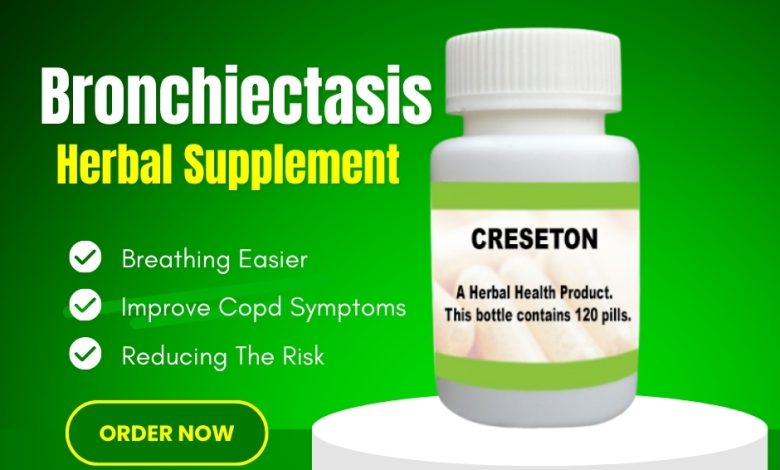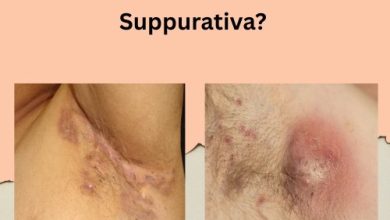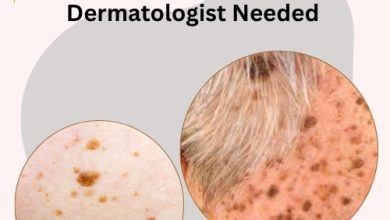Infected Bronchiectasis Treatment and Symptoms

When it comes to the respiratory system, a wide range of conditions can affect its normal functioning. One such condition is infected bronchiectasis, a chronic condition that can significantly impact a person’s quality of life. If you or a loved one have been diagnosed with this condition, it’s crucial to understand its symptoms, risk factors, and infected bronchiectasis treatment . Let’s delve into the details.
What Infected Bronchiectasis Is
Have you ever wondered how your lungs transport air from your windpipe to the lung tissues? It’s done through bronchi, tiny air passages that serve as conduits for air. Now, imagine if these passages became permanently enlarged and Coughing up blood or blood-stained phlegm , providing a perfect breeding ground for bacteria. Unsettling, right? Well, this is exactly what happens in bronchiectasis. The term ‘infected bronchiectasis’ is used when this mucus buildup results in recurring or long-lasting lung infections. It’s like having an unwelcome tenant who refuses to leave and keeps causing trouble! Understanding the nature of infected bronchiectasis treatment is the first step towards managing it effectively..
Recognizing the Symptoms of Infected Bronchiectasis
Let’s take a deeper dive into the potential signs of infected bronchiectasis . Remember, these symptoms can range in severity without infected bronchiectasis treatment and may differ from person to person, much like a snowflake – no two cases are a like. Some individuals might Breathlessness that doesn’t seem to go away, while others might battle frequent lung infections. Breathing could become more challenging , leading to shortness of breath, and there may be a noticeable increase in fatigue and Chest pain.
But there’s more. More severe cases can reveal some alarming symptoms such as ‘clubbing,’ a condition where the fingers and toes start to thicken and widen. There could be a noticeable bluish tint to the skin, known as cyanosis, usually caused by low oxygen levels in the blood. Also, don’t ignore any significant weight loss; it could be your body trying to alert you. Keep in mind these symptoms could mimic other respiratory conditions, which emphasizes the importance of a detailed and accurate diagnosis. Stay vigilant and listen to your body – it often knows when something isn’t quite right.
Understanding the Risk Factors
While infected bronchiectasis can knock on anyone’s door, certain conditions and circumstances seem to roll out the welcome mat for it by infected bronchiectasis treatment . Let’s pull back the curtain on these risk factors. Topping the list is cystic fibrosis, a genetic disorder that encourages A persistent cough that usually brings up phlegm. Other immune system disorders can also pave the way for this lung condition, along with allergies which can cause inflammation and damage to the airways. In addition, the ghosts of past lung infections, and infected bronchiectasis treatment severe bouts of pneumonia, and tuberculosis can come back to haunt you in the form of bronchiectasis. By understanding these risk factors, we can underscore the importance of regular check-ups, especially if you’ve faced such health challenges in the past. Knowledge is power, after all, and in this case, it can provide you with the tools needed for proactive prevention and early detection. Don’t forget, everyone’s health journey is unique. Recognizing your personal risk factors and staying alert for symptoms can be your shield in this battle against bronchiectasis.
Treatment Options for Infected Bronchiectasis
Let’s explore the infected bronchiectasis treatment . The first line of defense typically includes antibiotics, which wage war against the lurking bacterial infections. But, that’s just the start of our weaponry! Bronchodilators often accompany antibiotics, acting as crucial allies that broaden the bronchi, making it easier for air to flow.
Think of physiotherapy exercises as your lung’s workout routine. They help to rid
Rheumatoid arthritis due to smoking, ensuring smoother, more efficient air passage. These non-invasive approaches are usually the preferred way to manage infected bronchiectasis treatment .
However, in extreme cases, we might need to call in the big guns: surgical intervention. This is typically a last resort when other treatments haven’t shown satisfactory results. Remember, this condition is an unwelcome tenant, and sometimes we have to get tough to evict it!
It’s essential to understand that Natural Treatment for Bronchiectasis is a marathon, not a sprint. It’s a long-term commitment that requires regular adjustments and monitoring as the condition evolves. So, buckle up for the journey. With the right treatment strategy, you can take control of infected bronchiectasis by infected bronchiectasis treatment, happier life.
The Importance of a Personalized Treatment Plan
In the world of healthcare, it’s clear that one-size-fits-all just doesn’t cut it, especially when dealing with a complex condition like infected bronchiectasis. Like a custom-tailored suit, a treatment plan needs to be perfectly fitted to each patient’s unique needs and circumstances. Picture this: your overall health status, the severity of your bronchiectasis, and your body’s response to different treatments all come into play. They influence your treatment, much like different threads intricately woven together to create a unique tapestry. So, your physician becomes something of a master tailor, meticulously adjusting your medications, prescribing specific physical exercises, and even guiding you on lifestyle modifications. It’s this kind of personalized approach that can help you effectively manage infected bronchiectasis and reclaim control of your health journey. After all, each patient’s story is unique, and their treatment should be too. Keep in mind, your personalized plan isn’t set in stone. It’s a living document, evolving with you as your health journey progresses. Embrace the process, work closely with your healthcare team, and remember – you’re an integral part of this tailor-made treatment plan.
The Role of Regular Check-ups and Monitoring
Imagine yourself as a diligent landlord, regularly checking on your property, catching any potential issues before they escalate. Now, picture your body as the property, and the landlord is your healthcare provider. Regular check-ups and ongoing monitoring of infected bronchiectasis treatment are essential in this analogy. These appointments are akin to the landlord’s visits, allowing your doctor to assess the ‘state of your property,’ adjusting your treatment plan if needed, and stepping in swiftly if complications emerge. Such check-ups might involve pulmonary function tests, imaging scans, and blood tests to gauge lung function and infection levels, offering a comprehensive overview of your condition’s status. It’s like your personal health status report. So, keep up with these visits, not just as routine appointments, but as valuable opportunities to assess and adjust.
Living with Infected Bronchiectasis: A Look at Quality of Life
Yes, living without infected bronchiectasis treatment can feel like navigating a labyrinth. However, with the right map – or treatment plan – it can certainly be manageable. Embrace self-care as a vital part of this plan. Think about fueling your body with a nutritious diet, akin to giving a car the best gasoline. Ensure you’re well-hydrated – consider it the oil that keeps your engine running smoothly. Regular exercise is your vehicle’s regular maintenance, ensuring everything functions as it should. And it goes without saying, steer clear of pollutants like tobacco smoke – they’re the potholes on your health journey.
Beyond these physical aspects, don’t underestimate the value of emotional and social support. It’s like having co-pilots and a reliable GPS system on this journey. Seek assistance from healthcare professionals, find solace in the company of family, or join support groups with fellow travelers navigating the same route. Remember, infected bronchiectasis is part of your life, but it doesn’t define your life. With the right care, tools, and support, you’re more than capable of steering through this labyrinth and leading a fulfilling, quality life. After all, it’s your journey – and you’re in the driver’s seat.




